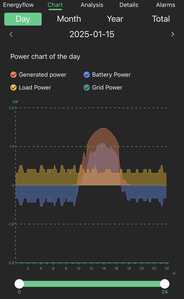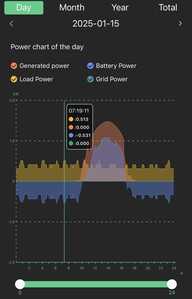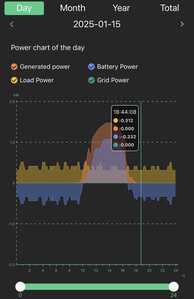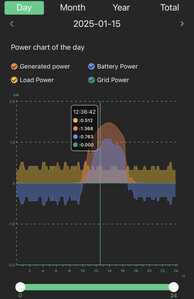I'm OK at math but still learning electricity
Have an off-grid greenhouse in southern Indiana with the following setup
- EG4 3kW Off-Grid Inverter (1511025)
- 10 Rich Solar Mega 200 Watt 24 Volt Solar Panels
- 1 EG4-LL Lithium Battery (V2) | 48V 100AH (1511066)
- 2 EG4 LL-S Lithium Batteries | 48V 100AH (1511082)
- Batteries are installed in an EG4 Enclosed Battery Rack | 3 Slot (1511229)
As a general rule of thumb, I equate 100AH batteries to roughly 5kW of stored electricity, per EG4s product specs.
I have three 100AH batteries, so roughly 15kW stored.
My load is less than 0.5kW. So if my math is right, I should have a little less than 30 hours of available battery power to my loads. I don't appear to be getting anything close to that.
I get that temperature has an effect on battery life and it has been quite cold recently here in southern Indiana.
Yesterday (January 15), according to the monitoring SmartESS app, I had 70% battery at 5:00pm, which should be around 20ish hours. I only got around 12 hours.
Inverter Settings:
01 - Utility First
Do I have enough batteries to last at least 24 hours for my constant 0.5kW load?
Is my math way off?
Is there a setting in the inverter I've missed or configured wrong?





